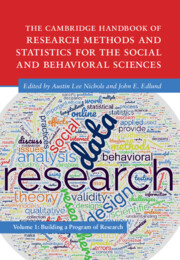 The Cambridge Handbook of Research Methods and Statistics for the Social and Behavioral Sciences
The Cambridge Handbook of Research Methods and Statistics for the Social and Behavioral Sciences from Part V - Tips for a Successful Research Career
Published online by Cambridge University Press: 25 May 2023
To survive and prosper, researchers must demonstrate a successful record of publications in journals well-regarded by their fields. This chapter discusses how to successfully publish research in journals in the social and behavioral sciences and is organized into four sections. The first section highlights important factors that are routinely involved in the process of publishing a paper in refereed journals. The second section features some factors that are not necessarily required to publish a paper but that, if present, can positively influence scientific productivity. The third section discusses some pitfalls scholars should avoid to protect their scientific career. The last section addresses general publication issues within the science community. We also recommend further resources for those interested in learning more about successfully publishing research.
To save this book to your Kindle, first ensure no-reply@cambridge.org is added to your Approved Personal Document E-mail List under your Personal Document Settings on the Manage Your Content and Devices page of your Amazon account. Then enter the ‘name’ part of your Kindle email address below. Find out more about saving to your Kindle.
Note you can select to save to either the @free.kindle.com or @kindle.com variations. ‘@free.kindle.com’ emails are free but can only be saved to your device when it is connected to wi-fi. ‘@kindle.com’ emails can be delivered even when you are not connected to wi-fi, but note that service fees apply.
Find out more about the Kindle Personal Document Service.
To save content items to your account, please confirm that you agree to abide by our usage policies. If this is the first time you use this feature, you will be asked to authorise Cambridge Core to connect with your account. Find out more about saving content to Dropbox.
To save content items to your account, please confirm that you agree to abide by our usage policies. If this is the first time you use this feature, you will be asked to authorise Cambridge Core to connect with your account. Find out more about saving content to Google Drive.